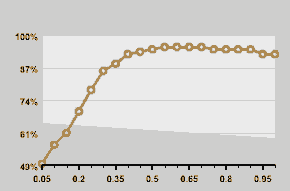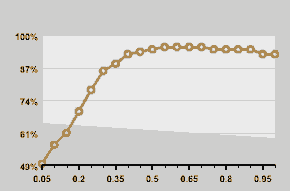walkinwood
Thinks s/he gets paid by the post
To the OP,
If you do a search in the bogleheads forum, you'll find a spreadsheet by Simba that has historical data for a number of funds. You may find funds similar to those you hold there & can then model for the timeframes you need. You will not find data going all the way back to 1929 though.
Edit: Here's the link to the spreadsheet thread
http://www.bogleheads.org/forum/viewtopic.php?t=2520&sid=966e0983d90fc99cddb8d2ebed8d9abe
I am in agreement with the others who say that fine tuning an asset allocation to get a 100% success rate is a waste of time, and could lead to a false sense of security.
Instead, if you feel that your funds should count as equities, treat them as such. Stick to an asset allocation that you're comfortable with, but which is in the range that the studies indicate - iirc, 40%+ to equities. More importantly, make sure your SWR includes some discretionary cushion & be prepared to reduce your withdrawals when markets are down & adjust them up slowly if the markets are good. These SWR rules are just rules of thumb & imho, no sane person should follow them to the letter.
If you do a search in the bogleheads forum, you'll find a spreadsheet by Simba that has historical data for a number of funds. You may find funds similar to those you hold there & can then model for the timeframes you need. You will not find data going all the way back to 1929 though.
Edit: Here's the link to the spreadsheet thread
http://www.bogleheads.org/forum/viewtopic.php?t=2520&sid=966e0983d90fc99cddb8d2ebed8d9abe
I am in agreement with the others who say that fine tuning an asset allocation to get a 100% success rate is a waste of time, and could lead to a false sense of security.
Instead, if you feel that your funds should count as equities, treat them as such. Stick to an asset allocation that you're comfortable with, but which is in the range that the studies indicate - iirc, 40%+ to equities. More importantly, make sure your SWR includes some discretionary cushion & be prepared to reduce your withdrawals when markets are down & adjust them up slowly if the markets are good. These SWR rules are just rules of thumb & imho, no sane person should follow them to the letter.





